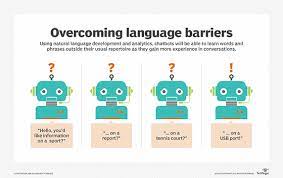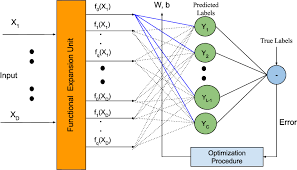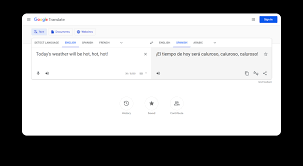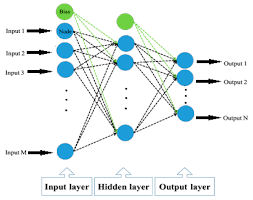Natural Language Understanding: Unlocking the Power of Human Communication
In a world where communication is key, understanding and interpreting human language accurately and efficiently is paramount. This is where Natural Language Understanding (NLU) comes into play. NLU is a branch of artificial intelligence (AI) that focuses on enabling computers to comprehend and process human language in a way that mimics human understanding.
At its core, NLU aims to bridge the gap between humans and machines by allowing computers to understand, interpret, and respond to natural language inputs. It goes beyond simple keyword matching or basic pattern recognition, delving into the complexities of human communication, including context, semantics, sentiment, and intent.
One of the fundamental challenges in NLU is dealing with the inherent ambiguity and variability of human language. Unlike structured data that follows predefined formats, natural language is dynamic, nuanced, and often open to interpretation. NLU algorithms strive to capture this complexity by employing advanced techniques such as machine learning and deep neural networks.
NLU has found applications in various domains, revolutionizing industries such as customer service, healthcare, virtual assistants, chatbots, sentiment analysis, and more. Let’s explore some key areas where NLU is making a significant impact:
- Virtual Assistants: Companies like Amazon’s Alexa, Apple’s Siri, Google Assistant have transformed how we interact with technology. These virtual assistants leverage NLU to understand user queries and provide relevant responses or perform requested actions.
- Customer Service: NLU has enhanced customer support experiences by enabling chatbots or AI-powered agents to understand customer inquiries accurately. By analyzing customer messages or voice inputs in real-time, businesses can provide personalized responses faster than ever before.
- Sentiment Analysis: With the explosion of social media platforms and online reviews influencing consumer behavior significantly, companies are leveraging NLU techniques for sentiment analysis. This allows them to gauge public opinion about their products or services quickly.
- Healthcare: NLU has the potential to revolutionize healthcare by analyzing medical records, research papers, and patient data. It can assist in diagnosing diseases, suggesting treatment plans, and extracting relevant information from vast amounts of unstructured medical data.
- Language Translation: NLU plays a vital role in machine translation systems, enabling them to understand the context and nuances of different languages. This helps in generating more accurate translations that capture the intended meaning rather than just word-for-word conversions.
However, despite the significant progress made in NLU, there are still challenges to overcome. Ambiguity, cultural context, slang, and evolving language patterns present ongoing hurdles for NLU algorithms. Researchers continue to explore ways to improve accuracy and tackle these challenges head-on.
As NLU continues to advance, it holds immense potential for unlocking new possibilities in human-computer interaction. With improved understanding of natural language inputs, machines can better assist us in our daily lives, streamline processes across industries, and foster seamless communication between people from diverse linguistic backgrounds.
In conclusion, Natural Language Understanding is a fascinating field that brings us closer to bridging the gap between humans and machines. By enabling computers to comprehend human language more accurately and effectively, NLU opens up a world of possibilities for enhanced communication and collaboration across various domains. As technology continues to evolve rapidly, we can expect even more exciting developments in this field that will shape the way we interact with machines in the future.
Frequently Asked Questions about Natural Language Understanding: Explained
- What is the natural language understanding?
- What is natural language example?
- What do you understand by language is natural?
- What is difference between NLP and NLU?
What is the natural language understanding?
Natural Language Understanding (NLU) is a branch of artificial intelligence (AI) that focuses on enabling computers to comprehend and interpret human language in a way that resembles human understanding. It involves the development of algorithms and models that allow machines to process, analyze, and derive meaning from natural language inputs such as text or speech.
NLU goes beyond simple keyword matching or basic pattern recognition. It aims to capture the complexities of human communication, including context, semantics, sentiment, and intent. By understanding the nuances and subtleties of language, NLU systems can accurately interpret the meaning behind words and phrases.
NLU algorithms utilize various techniques from fields such as computational linguistics, machine learning, and deep neural networks. These techniques enable machines to learn patterns in language data, identify relationships between words or concepts, and make informed decisions based on the context in which language is used.
The ultimate goal of NLU is to enable machines to understand human language inputs in a manner similar to how humans do. This includes understanding the implied meaning, recognizing sarcasm or irony, grasping cultural references, and interpreting ambiguous statements.
NLU has found applications in a wide range of fields. It powers virtual assistants like Siri or Alexa by allowing them to understand user queries and provide relevant responses. It enhances customer service experiences by enabling chatbots or AI-powered agents to accurately interpret customer inquiries. NLU also plays a crucial role in sentiment analysis by analyzing social media posts or online reviews to gauge public opinion.
While NLU has made significant advancements in recent years, challenges still exist. The inherent ambiguity and variability of natural language pose ongoing hurdles for NLU systems. Cultural context, slang expressions, evolving language patterns further complicate the task of accurate interpretation. Researchers continue to explore innovative approaches to improve NLU algorithms’ accuracy and robustness.
In summary, Natural Language Understanding is an AI-driven field that focuses on enabling computers to comprehend human language inputs accurately. By leveraging techniques from computational linguistics and machine learning, NLU systems strive to understand the complexities of language, interpret meaning, and facilitate effective communication between humans and machines.
What is natural language example?
A natural language example refers to a sentence or phrase that is written or spoken in a way that humans commonly communicate with each other. It is the everyday language used for conversation, writing, or any form of communication. Here’s an example:
“Could you please recommend a good restaurant near the city center?”
In this sentence, the words and structure follow the conventions of natural language, allowing individuals to easily understand and respond to the request. Natural language examples can vary in complexity and context, ranging from simple questions like the one above to more intricate discussions or narratives.
What do you understand by language is natural?
When we say that language is natural, it refers to the fact that human language is an innate ability and an integral part of our biological makeup as humans. Language is not something that is consciously taught or learned in the same way as other skills or knowledge. Instead, it emerges naturally and spontaneously in human societies through a combination of biological, cognitive, and social factors.
Language is considered natural because it arises instinctively in human beings without explicit instruction. Children acquire language effortlessly during their early development stages simply by being exposed to linguistic input from their caregivers and the environment around them. This process occurs universally across cultures, suggesting that humans are biologically predisposed to acquire and use language.
Furthermore, natural language exhibits certain characteristics that distinguish it from artificial or constructed languages. Natural languages are dynamic and constantly evolving, adapting to the changing needs and cultural contexts of their speakers over time. They possess complex systems of grammar, syntax, semantics, and pragmatics that allow for rich communication and expression of ideas.
Natural language also exhibits variability and ambiguity. The same word or phrase can have multiple meanings depending on the context in which it is used. This flexibility allows for creativity, metaphorical expressions, humor, and subtleties in communication.
In contrast to natural languages, artificial or constructed languages are deliberately created with specific rules and structures for communication purposes. Examples include programming languages like Python or constructed languages like Esperanto. While these languages serve practical purposes in certain domains, they lack the organic development and cultural richness found in natural languages.
Overall, when we refer to language as natural, we are acknowledging its inherent connection to human nature and its spontaneous emergence as a complex system of communication shared by individuals within a society.
What is difference between NLP and NLU?
Natural Language Processing (NLP) and Natural Language Understanding (NLU) are closely related but distinct fields within the realm of artificial intelligence (AI) that deal with human language. While NLP focuses on the processing and manipulation of text or speech data, NLU goes a step further by aiming to comprehend and interpret the meaning behind that language. Here are the key differences between NLP and NLU:
- Scope: NLP is a broader field that encompasses various techniques and algorithms for processing natural language data. It involves tasks such as text tokenization, part-of-speech tagging, syntactic parsing, named entity recognition, language generation, and more. On the other hand, NLU is a specific subset of NLP that focuses on understanding the semantics, context, sentiment, and intent behind human language.
- Understanding vs. Processing: The primary goal of NLP is to process or manipulate natural language data in some way without necessarily aiming to understand its meaning comprehensively. For example, an NLP system might extract keywords or perform sentiment analysis on a text without truly grasping the underlying message. In contrast, NLU aims to go beyond mere processing by attempting to understand the intended meaning of the language input.
- Contextual Interpretation: While both fields consider context in their analyses, NLU places greater emphasis on understanding context to derive accurate interpretations of natural language inputs. It takes into account not only individual words or phrases but also their relationships within a sentence or conversation to infer meaning accurately.
- User Intent: Another key distinction lies in their focus on user intent understanding. NLU systems aim to discern what a user intends when they communicate through natural language—whether it’s issuing a command, asking a question, expressing an opinion, or seeking information. This capability enables more sophisticated interactions between humans and machines.
- Applications: Both NLP and NLU find applications across various domains such as virtual assistants, machine translation, sentiment analysis, chatbots, information retrieval, and more. However, NLP is often used in tasks that require structured data processing or information extraction, while NLU is essential for applications that demand a deeper understanding of human language inputs and context.
In summary, NLP focuses on the processing and manipulation of natural language data using various techniques and algorithms. NLU, as a subset of NLP, goes beyond processing to understand the meaning behind the language input by considering context, semantics, sentiment, and intent. While NLP deals with text or speech data at a surface level, NLU aims to comprehend and interpret the underlying message accurately.




